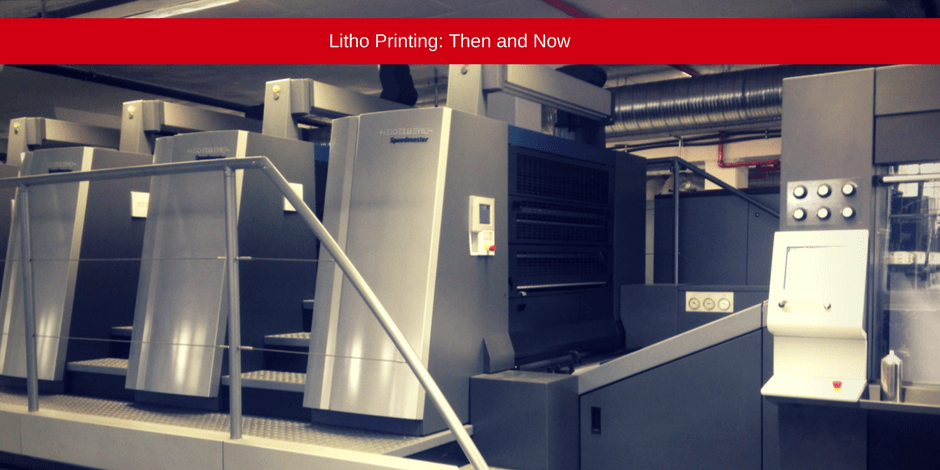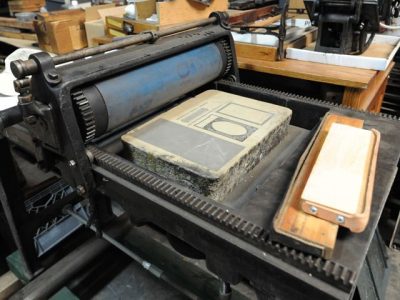Sustainable and Low-Impact Options in litho printing
Sustainable and Low-Impact Options in litho printing
Blog Article
A Comprehensive Guide to Understanding Litho Printing Techniques
The world of litho printing, a method originating from the late 18th century, is an interesting blend of history, science, art and development. This comprehensive guide will unravel the complexities of this printing method, from the make-up of litho inks to the difficulties dealt with in modern-day applications. As we venture into the ins and outs of lithography, the relevance of automation and sustainability in ensuring its future relevance becomes increasingly clear. Stick with us as we trip right into the exciting realm of litho printing.
The Historic Evolution of Litho Printing
The historical trajectory of litho printing, a critical advancement in the world of interaction, is an exciting tale of human resourcefulness. Birthed in the late 18th century by Alois Senefelder, this strategy was originally an affordable technique of releasing staged jobs. Lithography, acquired from the Greek words for 'rock' and 'to compose', used a smooth stone surface area to move images onto paper. The procedure developed with the advent of the rotary press, which substantially boosted efficiency (litho printing). In the 20th century, the advancement of balanced out lithography changed the industry, permitting mass production of top quality prints. Each stage of litho printing's development showcases humankind's relentless search of performance and quality in aesthetic communication.
Decoding the Scientific Research Behind Litho Printing Inks
Relocating onward in the exploration of litho printing strategies, the emphasis currently changes to the science behind litho printing inks. The make-up of these inks, their drying out procedure, and shade mixing techniques create the backbone of this complicated art kind. Comprehending these elements is critical to mastering the craft and attaining the desired print results.
Make-up of Litho Inks
In lithographic printing, the essential role of litho inks can not be overemphasized. Pigments, the color-providing elements, are carefully ground fragments put on hold in the lorry, a liquid that lugs the pigment onto the printing surface area. Each component plays an essential part in the last print's quality, making the accurate formulation of litho inks an elaborate science.
Ink Drying Refine
From the structure of litho inks, attention turns to the remarkable process of ink drying. 2 key techniques are used in litho printing: oxidative drying and absorption. Absorption, on the other hand, entails the ink seeping right into the paper fibers, which is a faster procedure yet can lead to less lively shades.
Color Combining Strategies
While the drying out process plays an essential function in litho printing, the scientific research of shade blending methods holds equal value. This is a complicated process that involves the cautious mixing of main shades: cyan, magenta, and yellow, in differing proportions to accomplish a broad range of tones. The enhancement of black ink, referred to as 'key', assists in controling the intensity and deepness of the colors. The scientific research behind litho printing inks likewise thinks about the transparency of the ink, which influences exactly how shades overlay and mix. To achieve an efficient color mix, print specialists need to likewise understand the details of ink habits, shade theory, and the physical buildings of the substrate on which the ink is applied.
The Art and Layout Aspects in Litho Printing
Litho printing breathes life into art and style with its unique elements. The procedure entails developing a photo on a lithographic limestone plate or metal plate with a smooth surface area. The picture is then published onto a medium, generally paper, by transferring the ink from the plate. What sets litho printing apart is its capacity to duplicate detailed layouts with high fidelity, making the output nearly similar to the original art work. This is achieved via making use of different line methods such as stippling, hatching, and cross-hatching, which enable for an array of tonal effects. Litho printing fits a range of shades, making it possible for artists to create lively and vibrant prints. This mix of accuracy and versatility makes litho printing a recommended choice for numerous musicians and designers.
Modern Applications of Litho Printing Techniques
Litho printing strategies have actually discovered substantial usage in the modern-day industrial field. Its impact and value proceed to grow with the advent of brand-new technologies and technologies in the field. This area will explore these modern applications and the transformative role they play in the printing industry.
Commercial Litho Printing Utilizes
In today's digital age, one may question the significance of standard printing approaches. Litho printing continues to be a vital part of the industrial industry. High-volume printing jobs, such as the production of books, papers, and official website packaging, count on litho printing for its capability to provide exceptional image quality and cost effectiveness. The process, which includes moving an inked picture from a plate onto a rubber blanket and afterwards to the printing surface, provides unparalleled uniformity. This makes it excellent for work calling for a huge print run. Litho printing additionally provides a wide color spectrum, above that of electronic printing. This makes it the go-to option for tasks that demand dynamic, top quality color reproduction.
Advancements in Litho Printing
Pressing the borders of conventional techniques, modern-day innovations have actually fueled a host of innovations in litho printing. One famous growth is electronic litho printing, which combines the virtues of electronic technology with look what i found litho's top quality outcome. These innovations highlight the long-lasting relevance of litho printing in the modern world.
Discovering the Process of Litho Printing: Detailed

Challenges and Solutions in Contemporary Litho Printing

Despite the accuracy and practice that litho printing proudly maintains, it is not without its collection of contemporary challenges. Digital litho printing allows for affordable short runs and easy modification, check that addressing the problem of variable information. Therefore, while there are difficulties, the litho printing market is proactively adapting to satisfy them head-on, guaranteeing its significance in the future.
Final thought
In verdict, litho printing, with its abundant history and clinical complexities, holds a considerable place in the print sector. The future of litho printing hinges on its ability to adjust to these altering needs, verifying its long-lasting worth in an advancing market.

Report this page